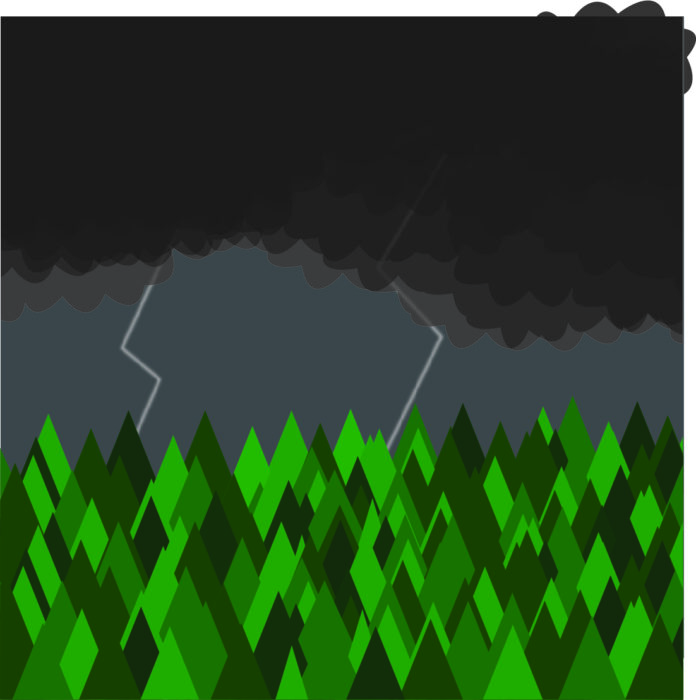Emergency alerts from Environment Canada have rung on residents of Southern Ontario’s phones frequently over the past few months as severe storms have ravaged the region.
Many natural disasters, such as tornadoes, are becoming increasingly common as temperatures change drastically due to climate change. Naturally, climate varies and can be extreme one year and moderate the next. However, with the impact of human activities such as burning of fossil fuels for energy production, substantial swings in climate have been observed worldwide. In Ontario, average temperatures are expected to rise, which may lead to a higher frequency of severe weather events including record-breaking storms, floods, droughts and heatwaves as has been seen this summer.
Tornadoes form under a unique set of circumstances, as warm, humid air collides with cold and dry air, usually producing a thunderstorm first. When warm air rises through the colder air, it creates an updraft and may move in a way that allows the updraft to rotate and draw in more warm air, increasing its rotation speed. This is known as a mesocyclone. Water droplets from the mesocyclone’s moist air form a funnel cloud that continues to grow until it hits the ground and officially becomes a tornado. Supercells, which are characterized by a deep and consistently rotating updraft, are the most destructive kind of tornado.
Like other natural disasters, tornadoes are influenced heavily by climate. When it comes to the climate of Southern Ontario, there are two major factors which are at play — its location in the middle of the Northern American landscape and the Great Lakes. Being in the middle of the continent leads to more swings in temperature between warmer summers and colder winters, as the land is far from the ocean, which acts as a stabilizer.
In the summer, high pressure systems from the subtropical Atlantic Ocean force warm and humid air into the Great Lakes region. In the winter, frequent storm systems can be seen as cold Arctic air masses move southward into the region at the same time as the polar jet stream is at play.
The Great Lakes also impact Ontario’s climate, as large bodies of water gain and lose heat slower than the surrounding land. This can result in rapid changes in air temperatures and more extreme snowstorms near the shores.
As reported by the Interdisciplinary Centre on Climate Change at the University of Waterloo, the local climate in the Kitchener-Waterloo region is predicted to get “warmer, wetter and more extreme.” The annual average temperature is projected to increase by 2C to 3C by 2050, including 32 days of extreme summer heat if current emissions continue, and 60 days if current emissions continue by the 2080s. In the best case scenario, with net-zero emissions, 15 days of extreme heat can be expected per summer.
Total annual precipitation is also expected to increase, likely by four to six per cent in the 2020s and eight to twelve per cent in the 2050s, with more intense rain and storms predicted as well.
From January to mid-August of this year, 17 tornadoes ripped through Southwestern Ontario. Frances Lavinge-Theriault, a research assistant with Western University’s Northern Tornadoes Project, said his team is seeing an increase in the number of not only storms but tornadoes in Southern Ontario. Lavinge-Theriault said in an interview with CBC News that “the old average for Ontario is 12 to 12.5 tornadoes. We are slightly above average at 17 so far.”
In the Kitchener-Waterloo area, severe thunderstorm warnings have become frequent. Rob Kuhn, an Environment Canada meteorologist, tweeted out that as of 12 a.m. on Sept. 8, Kitchener’s Stanley Park had seen a total of 26 millimetres of rain from two thunderstorms that day. This unusual amount of precipitation from the storm caused flooding in some areas and power was knocked out as well. Multiple possible tornado touchdowns from the same storm around Lake Huron are being investigated by Lavinge-Theriault and the team at Western University.
With an increasing frequency of extreme weather events already being observed in Southern Ontario, it is becoming increasingly important to prioritize climate action and be aware of how to stay safe when it comes to severe weather. Environment Canada recommends preparing a first aid kit before the storm and sheltering in place during the storm such as in a basement should there be a tornado, staying away from windows and doors. For more information on how you can stay safe during storms, visit GetPrepared.ca or call 1 800 O-Canada.































